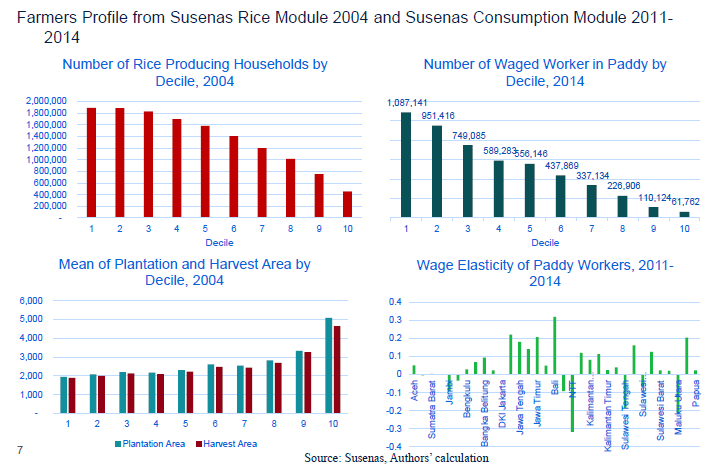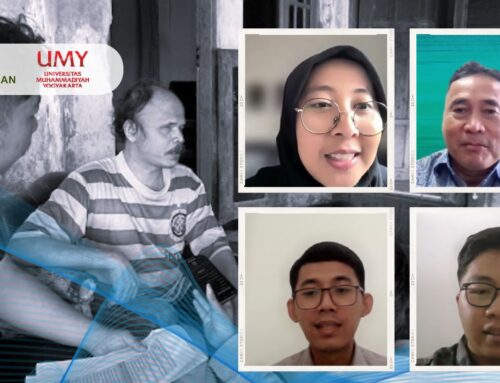On 11 April 2018, Lembaga Ilmu Pengetahuan Indonesia hosted the second FKP seminar of the month in Jakarta. There were two different topics discussed at the event. The first topic was presented by Monica Wihardja (World Bank Indonesia) on using the Quadratic Almost Ideal Demand System (QUAIDS) methodology to estimate the elasticity of food-driven poverty. The study is important because Indonesia has had the highest annual average rate of increase in retail rice price in Asia.In addition, Indonesians depended heavily on food, as it accounted for 73.35% of the poverty line in September 2017, therefore a change in food prices may affect poor people significantly.
The study aimed to estimate the impact of rice price on poverty by taking into account income effect, substitution effect, production effect, and wage effect, and utilized the QUAIDS (Quadratic Almost Ideal Demand System) methodology to estimate poverty elasticity and distributional impact with respect to the price of rice. This method estimates the substitution effect when there is a lack of information on household consumption changes over time and price level at the time of the household consumption survey.
The study found that the elasticity of poverty with respect to rice price changes declined significantly from 2013 to 2015 due to a decline in the consumption effect (likely caused by a decrease in rice consumption level in the overall population). Furthermore, the study also found that there is a declining trend in the negative impact of rice price increase to society, which means that poorer people were more affected by rice price increase compared to their richer neighbor. This condition is similar to other net rice-importing Asian countries, where higher rice prices increase poverty despite a decline in elasticity. In their slides, the researchers also provided some technical explanation for constructing a QUAIDS model.
The second presenter, Joko Suryanto (LIPI), shared his study on creative industry in Indonesia. He tried to identify the characteristics and business processes of three sub-sectors (culinary, fashion, and craft sectors) and possible efforts to enhance economic activity in these sub-sectors. The study is relevant since creative industry evolves as an impact of shifting economic structure, which commonly occurs as an economy transforms to the services sector. The top three sub-sectors were chosen to be included in the study due to their higher GDP contribution compared to other sub-sectors. Joko used an exploratory approach in his study by observing creative economic agents in West Java, East Java, and Bali, and the use of secondary data. He also redefined the term “creative industry” in his study since the industry and economics of creativity is relatively a new term and have different translations in some regions in the world. From this research, he found that the classification and definition of “creative industry” depends on region-specific characteristics such as local culture and leading sectors. Of the three sub-sectors, the study found that local content and personal creativity in creating output in the creative industry is very essential in the case of Indonesia. Personal creativity is essential for escalating added value.
For the complete presentation and Q&A session, please refer to the videos and materials provided.





